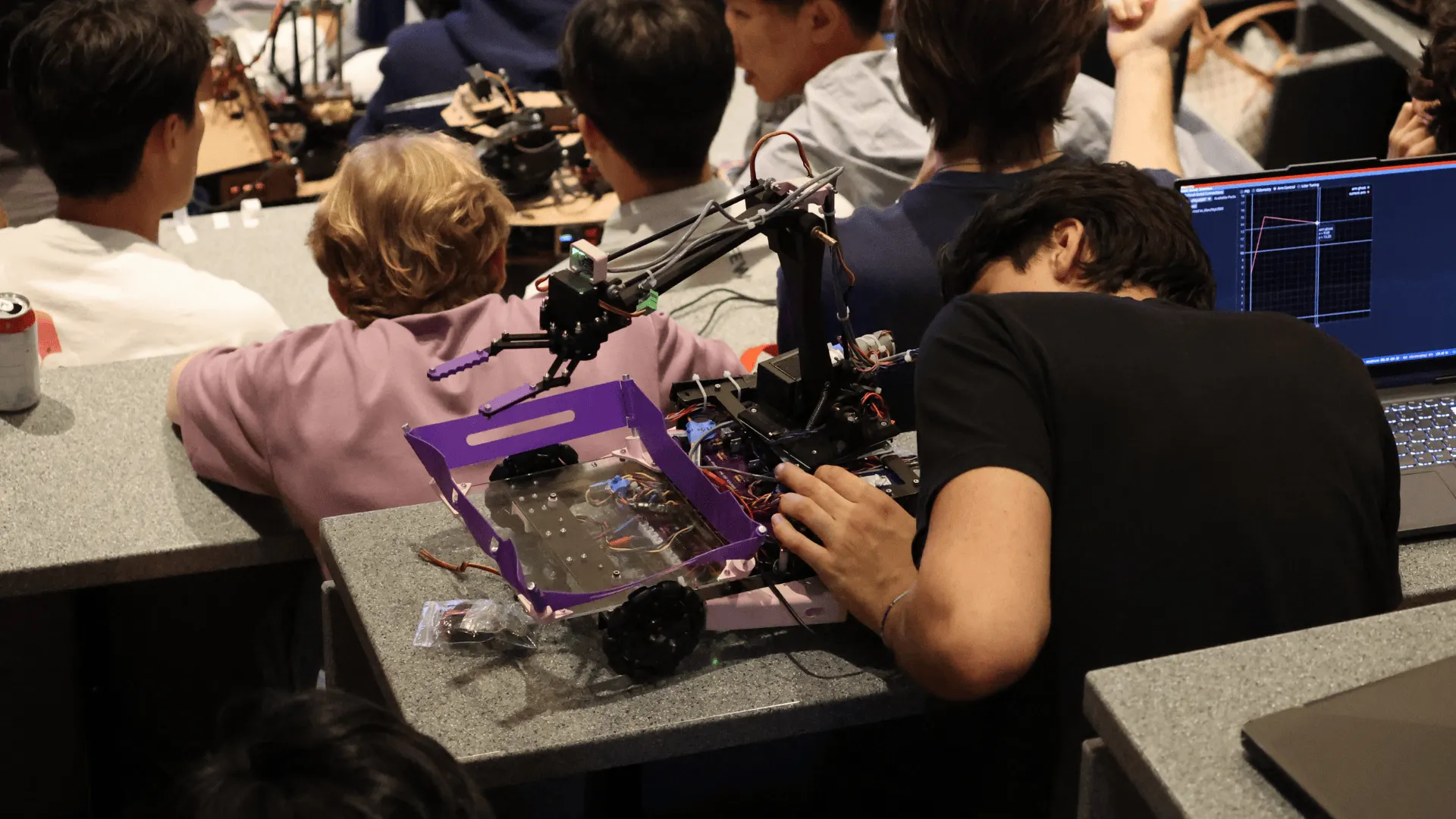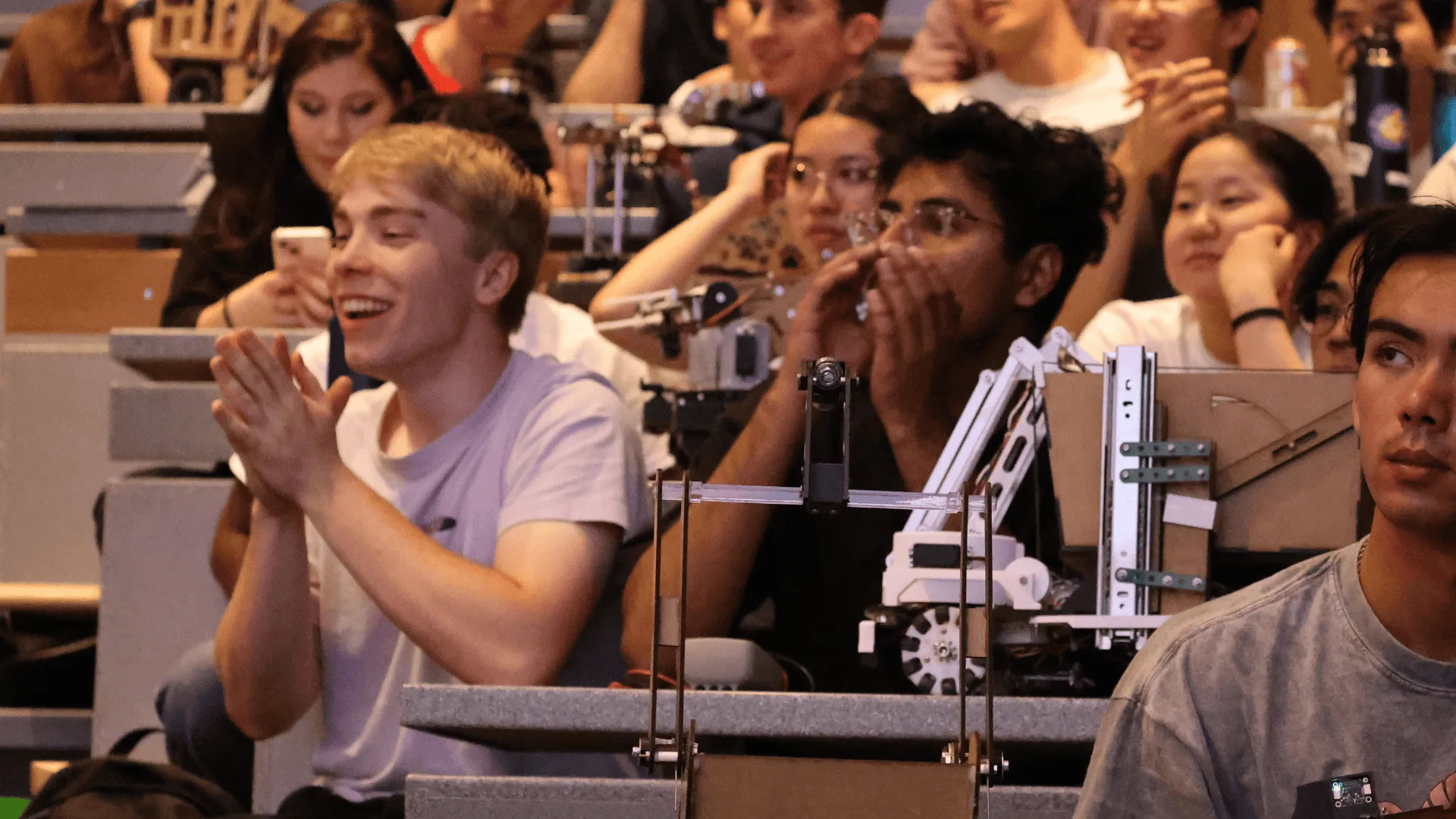UBC students build robots to save pets in peril at annual competition

UBC engineering physics students faced a daunting challenge last Thursday: An animal shelter is on fire, and the building is too dangerous for firefighters to enter. Only their robots could bring the pets to safety!
While no pets were actually in harm’s way, this scenario was the premise for this summer’s ENPH 253: Introduction to Instrument Design class. For six weeks, fifteen teams of students worked around the clock to build fully autonomous robots that could navigate a debris-filled course and return the “pets” (stuffed animals) to a safe zone.
In front of a boisterous audience and the viewers who tuned in to the live stream, the teams put their creations to the test in a tournament-style showdown.

A race against the clock
Competing on identical courses, teams went head-to-head in two-minute rounds to rescue as many pets as possible. A point was awarded for each animal returned to the safe zone, with bonus points awarded at the judges’ discretion for near misses or notable maneuvers.
Pet rescue methods varied across the robots. Several teams used AI to train their robots to recognize stuffed animals. Others used sensors to detect the field of a small magnet sewn into each pet. Some deployed arms to pick up the toys and gently place them in a basket, while one robot catapulted their rescued pets through the air and into the safe zone through a debris chute. One team even made use of the cable running over the course to zipline their animals to safety.
The first round passed quickly, with teams making improvisations to their robots on the fly in anticipation of the knockout rounds. The first round also saw two teams rescue the most pets in one turn; team 2 and team 13 both collected an impressive five out of seven animals.

From the lab to real life
The competition, now in its third decade, is an opportunity for students to gain hands on experience at an early stage in their program. Dylan Gunn, director of the UBC Engineering Physics Project Lab, was impressed by the tools students used while building their robots. “Some teams are applying advanced concepts like machine learning, which are not formally taught until later in the program,” he shared.
Dr. Andre Marziali, director of UBC Engineering Physics, agreed. “They’re using really advanced technologies – the same as you’d find in a self-driving car. They’re using lidar, they’re using sonar, and they’re using machine vision.” For some students, the course was the first time they’d used hand tools.
The skills learned through ENPH 253 are valuable for senior-level courses and capstone projects and can be taken into careers post-graduation. Engineering physics graduates, some of whom were in the crowd to take in the competition, have gone on to work in alternative energy, quantum computing and fintech.
The final round came down to teams 2 and 7. While their robots showed some signs of wear after a long morning of competition, one team emerged victorious. As their robot dramatically tumbled from the upper level of the course into the safe area, team 2 claimed the hard-fought win.
While the competition runs annually, the theme changes year-to-year. In 2024, teams built burger-assembling robots in a challenge inspired by the game Overcooked. The year prior saw robots race in a course reminiscent of Mario Kart.



